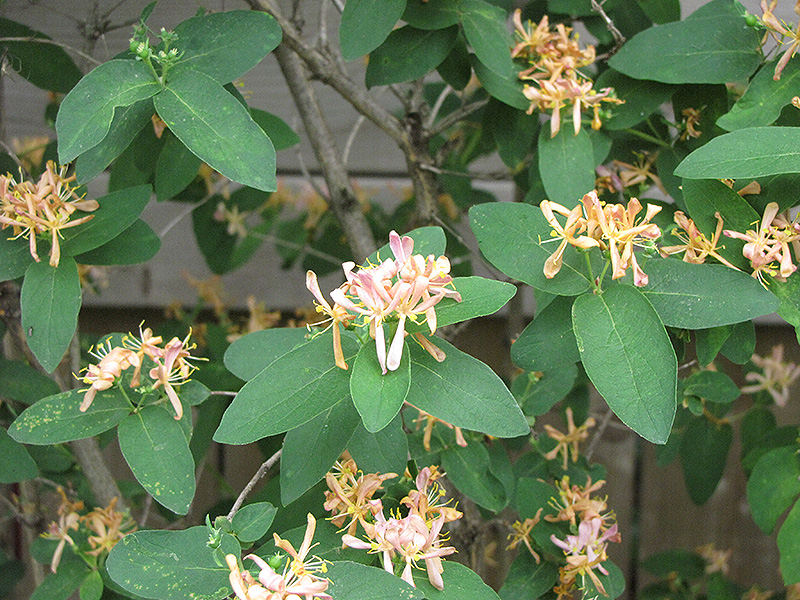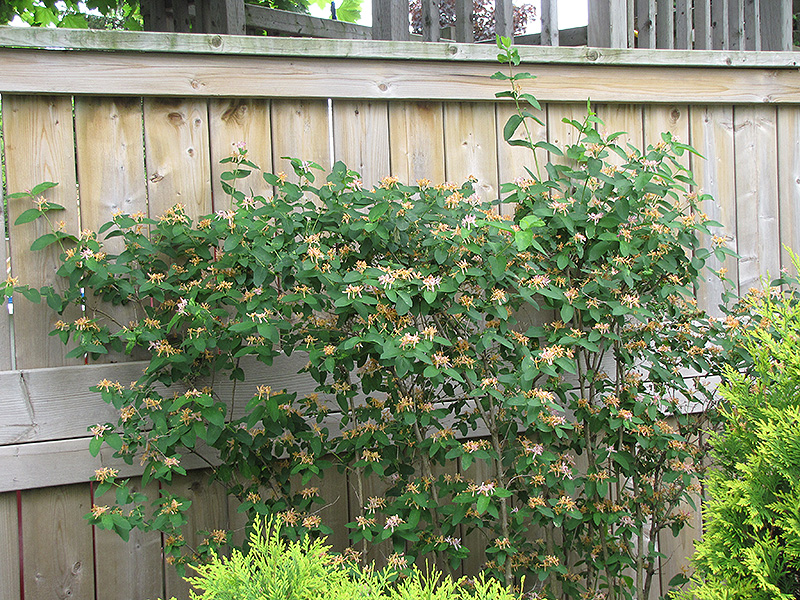Belgica Honeysuckle
Lonicera periclymenum 'Belgica'
Height: 8 feet
Spread: 5 feet
Sunlight:
![]()
![]()
Hardiness Zone: 4a
Other Names: Early Dutch Honeysuckle
Description:
An interesting shrubby version of this native honeysuckle with incedredibly fragrant hot pink colored flowers that fade to cream and bloom over a long period on a spreading woody plant; a perfect selection to cascade over walls or arbors
Ornamental Features
Belgica Honeysuckle features showy clusters of fragrant hot pink trumpet-shaped flowers with shell pink overtones at the ends of the branches from mid to late spring, which emerge from distinctive rose flower buds. It has attractive green foliage with bluish-green undersides. The pointy leaves are highly ornamental and turn an outstanding plum purple in the fall.
Landscape Attributes
Belgica Honeysuckle is a dense multi-stemmed deciduous shrub with an upright spreading habit of growth. Its average texture blends into the landscape, but can be balanced by one or two finer or coarser trees or shrubs for an effective composition.
This shrub will require occasional maintenance and upkeep, and is best pruned in late winter once the threat of extreme cold has passed. It is a good choice for attracting butterflies and hummingbirds to your yard. It has no significant negative characteristics.
Belgica Honeysuckle is recommended for the following landscape applications;
- Mass Planting
- Hedges/Screening
- General Garden Use
- Groundcover
Planting & Growing
Belgica Honeysuckle will grow to be about 8 feet tall at maturity, with a spread of 5 feet. It tends to fill out right to the ground and therefore doesn't necessarily require facer plants in front, and is suitable for planting under power lines. It grows at a medium rate, and under ideal conditions can be expected to live for approximately 20 years.
This shrub does best in full sun to partial shade. It does best in average to evenly moist conditions, but will not tolerate standing water. It is not particular as to soil type or pH. It is somewhat tolerant of urban pollution. Consider applying a thick mulch around the root zone in winter to protect it in exposed locations or colder microclimates. This is a selection of a native North American species.



